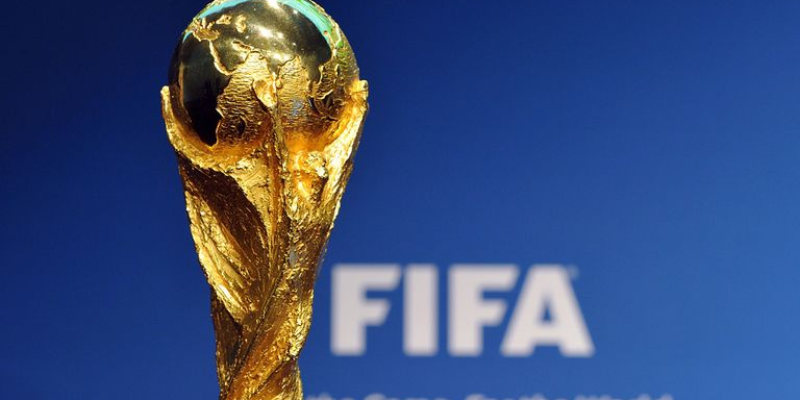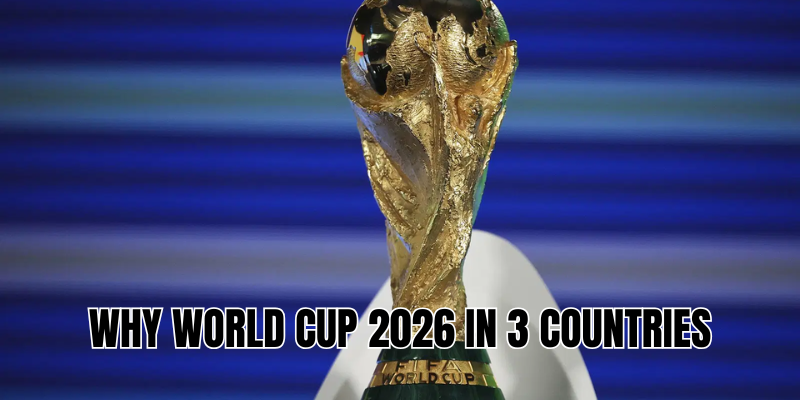In this article, MatsuGoal will dive into exactly why World Cup 2026 in 3 countries – the US, Canada, and Mexico – is more than just a novelty. It’s a strategic choice by FIFA designed to balance infrastructure, cost, reach, and spectacle. By the end, you’ll understand what makes this triple-host setup unique, what challenges it brings, and how it could reshape future tournaments.
Key reasons behind triple-hosting

Here are the main motivations that led FIFA to choose three host nations for 2026.
Shared financial burden
Hosting a World Cup is wildly expensive: stadiums, transportation, security, accommodation, and more. By spreading the costs over three countries, US, Canada, and Mexico can share the investment, reducing the financial risk for each. This lets each country leverage existing stadiums and infrastructure more effectively.
Infrastructure & venue readiness
All three nations already have strong stadiums, transport links, and accommodations compared to many other potential single hosts. The US has many large, world-class stadiums, Canada and Mexico have historic venues and decent infrastructure. Utilizing what exists (renovating rather than always building from scratch) helps keep costs down and minimizes “white elephant” stadiums.
Increased global reach & fan engagement
Having matches in three different countries boosts overall audience, both locally and internationally. Fans. It also brings in different cultural atmospheres—each host offers its unique flavor, boosting global interest and making the tournament richer.
Supporting the expanded format
2026 is the first World Cup with 48 teams, up.
Winning the bid & political strength
The “United 2026” joint bid.
How it works: distribution of matches, roles & logistics

Knowing why is one thing; seeing how it plays out is equally interesting. Below are the operational details that make triple-hosting feasible.
Match distribution among countries
- A total of 16 host cities are selected across the three countries. The US hosts the majority of matches; Canada and Mexico host fewer but still significant games.
- Group stage matches are spread out to reduce travel strain on teams and fans. Cities are grouped regionally to limit cross-continent travel as much as possible.
- High-stakes matches (like quarter-finals, semi-finals, final) are mostly allocated to venues in the US, leveraging its larger stadiums and experience in hosting big events.
Automatic qualification & tournament format
- All three host nations (US, Canada, Mexico) automatically qualify for the World Cup.
- The format for 48 teams means 12 groups of 4 teams. The top two in each group plus the 8 best third-place finishers advance to a round of 32.
Venue selection & infrastructure upgrades
- Some stadiums already meet FIFA’s requirements; others need renovation. Big venues are used for major games (opening match, high capacity, etc.).
- Cross-border coordination on travel, customs, fan visas, security, broadcasting—all more complex when multiple nations involved.
Benefits vs Challenges

Every major decision has trade-offs. Here are what fans, organizers, and host nations gain — and what issues they must work through.
Benefits
- Wider audience: More fans get to experience the games live. Local economies across different nations benefit.
- Reduced per-country cost & risk: Infrastructure burdens are shared, decreasing the chance of overspending or unused stadiums.
- Higher prestige & visibility: A joint tournament draws more media, more international attention.
- Logistics scalable: Using multiple existing facilities helps manage the burden of staging 104 matches.
Challenges
- Travel complexities: For fans, teams, and officials. Crossing borders brings customs, visa, and transportation issues. Even domestic travel in large countries is demanding.
- Standardization: Ensuring all stadiums, pitches, training facilities, accommodations meet consistent standards in three different countries.
- Coordination: Between national governments, local authorities, security agencies—harmonizing regulations and operations is complex.
- Environmental impact: More travel (especially air travel) means increased carbon emissions. Sustainability is harder to control over larger geographic spread.
Why this matters for the future
The triple-host model is not just for 2026—it sets precedents.
- FIFA has shown willingness to approve joint, large-scale bids involving multiple countries, especially when infrastructure and logistics support it.
- Expansion to 48 teams might become the norm going forward, meaning bigger tournaments need larger footprints.
- Shared hosting could become more common—countries teaming up to share costs and maximize existing resources rather than every emerging host building.
Conclusion
Why World Cup 2026 in 3 countries happens is a mix of ambition, practicality, and vision. It allows FIFA to stage the most ambitious men’s World Cup yet—48 teams, 104 matches—while balancing costs, reach, and logistics. Fans will see the sport in multiple cultures, and the strain of hosting is shared.
If you want to keep up with match schedules, ticket info, and host city updates for World Cup 2026 in 3 countries, MatsuGoal has you covered. Stay tuned, and join us as we count down to what promises to be a spectacular celebration of global football.







